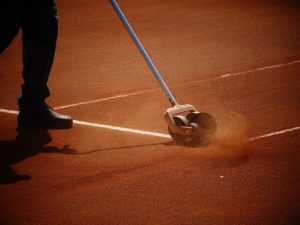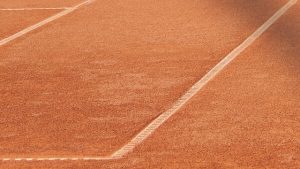Sports is pretty much one of the most exciting aspects of modern civilization. Just like in the ancient times, sport is the one area that honors physical agility and fair contest. In the United States, games like boxing, wrestling, and mixed martial arts apply the idea of aggressive competition between two single duelers. But if there is one sport where two rival participants play real hard without injuring each other (at least not intentionally); tennis is just one of the ideal choices.
For a ball game, this sport is not designed for team play. Unlike basketball and American football, individual skill and stamina make or breaks the tennis player’s pursuit of victory. It is also curious to know that tennis belongs to the top 10 most popular sports in North America. In fact, according to Statista, there are around 18 million active players in the United States as of 2015.

Another interesting fact about tennis is that it is one of the fewest popular sports where female players have an approximately equal ratio as that of the males. Considering this fact, it only goes to show that sports being defined a male-dominated field seems (in this case) more of a myth.
Although it was mentioned earlier that tennis gameplay largely depends on the player’s agility and reflexes, physical prowess is only the part of the equation. Another factor that can determine the natural mechanics of the game is the playing field itself. Suffice to say that poor conditions of the tennis court can pretty much throw the entire contest itself. The whole concept of a tennis court maintenance cost is geared towards maintaining the best environment that does not rob the player’s fair chances of winning.
General Average Cost
The average tennis court resurfacing cost is one of the most important aspects of the overall budget spent on maintaining the playing field. According to Sports Master, the conservative projected figure is somewhere between $4,000 and $8,000. Fortunately, when compared to the overall cost of tennis court construction, this price range is only a measly fraction. The ballpark figure presented by Home Advisor is approximately $7,706, based on the data pooled from the 15 subscriber profiles.
Considering a number of factors affecting the cost, it is not surprising how figures could climb up to $10,000 or $15,000. One has to account the level of complexity in terms of doing the repairs as well as other calculable and observable details (more to be discussed in the subsequent part of the article). Apart from the tennis court resurfacing cost, managers might also take note of the other necessary repairs included in the overall maintenance budget:
- Foundation inspection fee: $400 to $600
- Serious structural repair: $25,000 to $50,000
- Crack repair kit (for DIY): $50 to $500
- Tennis net replacement: $100 to $200
- Windscreen replacement: 35 to 40 cents per square foot
Repair Pointers
Considering the overall cost to repair a tennis court, prospective managers (or homeowners) must have a clear idea on whether or not their budget yields the optimal return on investment. One of the best ways to ensure that one is neither over-spending nor short-changing favorable service is to take note of the maintenance cycle. Case in point: Sport Master indicates that the standard repair cycle for acrylic tennis courts is around 5 to 8 years.
A smarter spending scheme is always predicated by a full tennis court inspection every year, many of which usually scheduled during the spring season. As mentioned earlier, these are the observable and calculable details that affect the complexity and duration of the tennis court resurfacing:
- Condition and appearance of the facility
- Surface damage (e.g. birdbaths, craters and cracks)
- Performance of the drainage system
- Areas of premature damage or deterioration
- Condition of surfacing system (e.g. fading, stains, mold growth, etc)
- Condition of tennis court accessories (e.g. net, windscreen, etc)
Types of Tennis Courts
Another key factor that affects the overall cost to repair a tennis court is the type of surface used to pave the entire playing field. Considering that tennis courts come in several different varieties, it is important for prospective property managers and homeowners to know the vital advantages and downsides of choosing a particular surface material. These are the common types of tennis courts worth analyzing:
Asphalt
One of the key advantages of an asphalt tennis court is that it is a very durable material, lasting up to 20 years (which is relatively twice the natural repair cycle of an acrylic surface). Another benefit of choosing asphalt courts is that it is cheaper compared to concrete. The real downside to choosing asphalt is that it deteriorates faster in humid climates.
Clay
Clay is an ideal material for reducing chances of serious injuries due to its softer surface. In addition, it also allows players the reach advantage of sliding. Unfortunately, clay is relatively fragile against arid temperatures. The maintenance requirement is much higher compared to asphalt and concrete – which also often translates to higher maintenance cost.
Concrete
Compared to asphalt, concrete lasts twice the durability period (about 40 years). Due to its high material density, concrete tennis courts have the flattest and most uniform surface. However, the advantage of its hardness also paves the way for its weakness. When a concrete tennis court is damaged, it will require a month to complete the restoration process.
Grass

Among the other types of tennis courts mentioned earlier, the grass is the only material that is naturally soft. Grass surfaces have a much higher chance of reducing serious injuries compared to clay considering that this type of playing field is relatively non-abrasive. Furthermore, grass tennis courts are a more suitable arena for advanced training due to its faster pace.
Unfortunately, the grass tennis court maintenance cost yields the highest upkeep requirement. In fact, according to the forum discussed in Tennis Warehouse, grass tennis courts have to be mown almost daily. The court’s playable condition demands a labor-intensive and cost-inefficient conservation requirement, considering how electricity or fuel expenses for the lawn mower operation can be included in the total upkeep budget.
